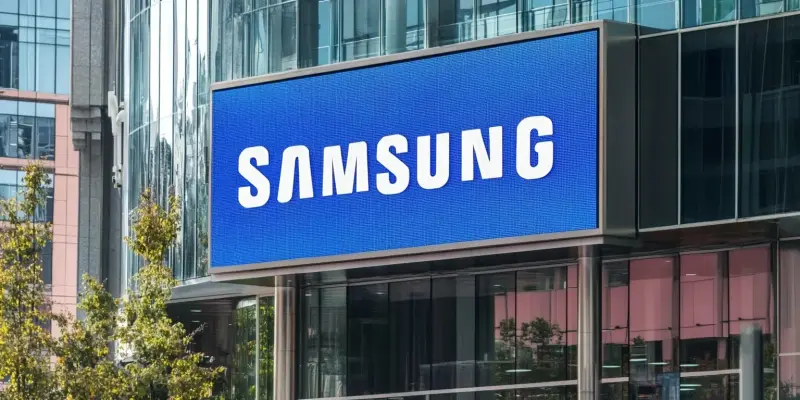Samsung’s ambitious plans for its 1.4nm-class SF1.4 manufacturing node, which aimed to enhance power efficiency and performance for high-performance computing and AI applications, are in jeopardy. This potential setback, rumored by trusted leaker @Jukanlosreve, compounds ongoing struggles within Samsung Foundry. The company has experienced subpar yields from its SF3 process, leading to delays in Exynos 2500 production. Additionally, reduced demand forced scaling back of older 5nm and 7nm nodes.
Ongoing Struggles in Foundry Production
Yield Issues and Production Delays
The technical difficulties Samsung experienced with its SF3 process have been a significant roadblock. Poor yields from this node have resulted in substantial delays in the production of the highly anticipated Exynos 2500 chipsets. Samsung’s reluctance to abandon this node entirely stems from the heavy investments made and the company’s commitment to pushing technological boundaries. Nevertheless, these ongoing problems have undermined confidence, with repercussions that go beyond merely delayed timelines, potentially affecting the overall competitiveness of Samsung Foundry.
Adding to these complications, there has been a noticeable dip in demand for chips manufactured at the earlier 5nm and 7nm nodes. Market realities have dictated a reduction in production at these nodes, a move that reflects broader shifts as innovation advances. For Samsung, this merely adds another layer of difficulty. Reduced production capacity often translates to higher per-unit costs, which can hinder the company’s ability to price competitively against rivals in the foundry market, further exacerbating the challenge of maintaining a sustainable edge in this high-stakes race.
Exynos 2600 and AI Chips Development
Despite the disheartening performance issues and delays with the Exynos 2500, Samsung has not paused its development efforts. The company is making steady progress on the next-generation Exynos 2600 chips, which are being developed on the SF2 node. If successful, this could mark a critical turning point for Samsung, but the entire endeavor is overshadowed by persistent doubts regarding the company’s ability to overcome the yield issues that plagued earlier nodes.
In parallel, Samsung is venturing into AI-specific applications, developing specialized chips to cater to such demands. Collaborating with PFN, a promising stride involves leveraging their advanced processes for a new line of AI chips. Securing orders from Chinese companies affected by trade sanctions further diversifies Samsung’s clientele and provides some much-needed optimism. These combined efforts reveal a dual strategy: continuing to advance performance nodes while also branching into burgeoning markets to sustain growth.
Competitive Pressures and Market Dynamics
Market Share Erosion
Samsung Foundry is struggling to hold its ground against formidable competitors like TSMC and Intel. With TSMC commanding a dominant 67.1 percent market share, compared to Samsung’s significantly smaller 8.2 percent, the disparity underlines the daunting challenge that lies ahead. The wide gap in market share reflects not only technological lag but also a broad spectrum of operational efficiencies and customer trust issues that Samsung must address to reclaim its standing.
Beyond the foundry market, Samsung’s struggles permeate its broader business landscape. The company has seen its market share in smartphones and memory chips decline, amidst rising geopolitical risks and raw material price volatility. Samsung’s smartphone market share fell to 28.3 percent in 2024, a drop from 30.1 percent in 2023, indicating diminishing dominance in a cornerstone market. Additionally, its share in the DRAM market saw a slight decline from 42.2 percent to 41.5 percent, signaling challenges on multiple fronts.
Investment Cuts and Strategic Shifts
In response to these multifaceted pressures, Samsung has opted to slash foundry investments for 2025 dramatically, allocating KRW 5 trillion ($3.5 billion), down from KRW 10 trillion in 2024. This decision likely reflects a pragmatic reassessment of long-term strategies and immediate fiscal prudence. Lower investments may buy Samsung time to recalibrate, focusing on resolving critical issues within their current nodes and working on tactical partnerships to enhance capabilities without massive expenditures.
Discussions are also underway about transitioning the Exynos department to Samsung MX, which could potentially offer better control over smartphone chip designs. This move might herald a new era where internal restructuring could foster enhanced competitiveness. By potentially consolidating resources and talent, Samsung seeks to foster innovation and streamline production processes, making future ambitions on advanced nodes like the SF1.4 more feasible, even amid the specter of persistent challenges.
Navigating Uncertain Futures
Advanced Node Ambitions
As Samsung cuts investments and navigates competitive pressures, the future of its advanced node ambitions remains uncertain. Shifting resources and realigning investment strategies might offer temporary relief but solving underlying yield issues and enhancing competitive capacity is imperative. Persisting with the 1.4nm-class SF1.4 node despite its challenges represents Samsung’s commitment to breaking new ground, yet success hinges heavily on overcoming the technologically demanding production hurdles.
Considering the technological rigor required, international collaboration and strategic partnerships might be pivotal for Samsung. Partnering with other tech giants can offer new insights and access to shared R&D resources. Additionally, outsourcing certain phases of chip production to regions less affected by geopolitical tensions could minimize supply chain disruptions. These nuanced approaches necessitate careful planning but could help Samsung stay at the forefront of semiconductor innovation.
Long-term Strategic Adaptations
Meeting the demands of both present and future technological advancements remains a significant challenge for Samsung Foundry. This wavering trajectory impacts not only their immediate plans but also their positioning in the competitive semiconductor manufacturing industry. The company’s ability to overcome these hurdles will be crucial in maintaining its reputation and market share.

